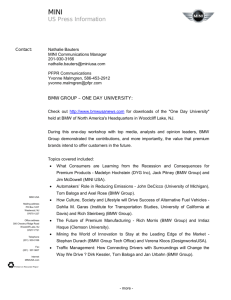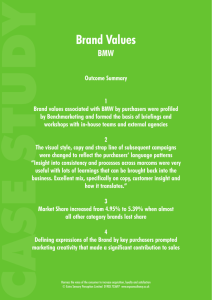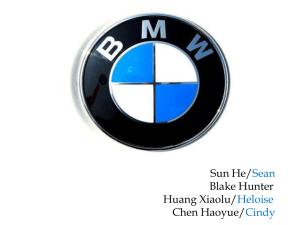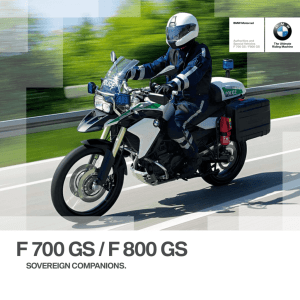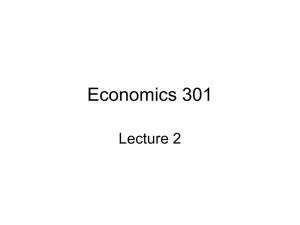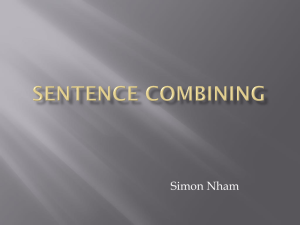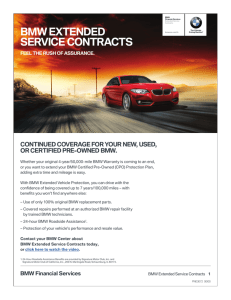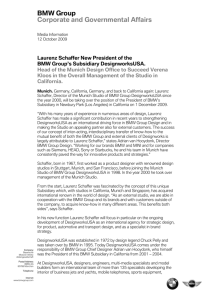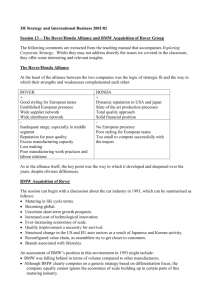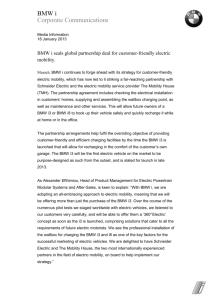DVD#1: BMW and the Product Life Cycle (Video Library, Kerin et al
advertisement
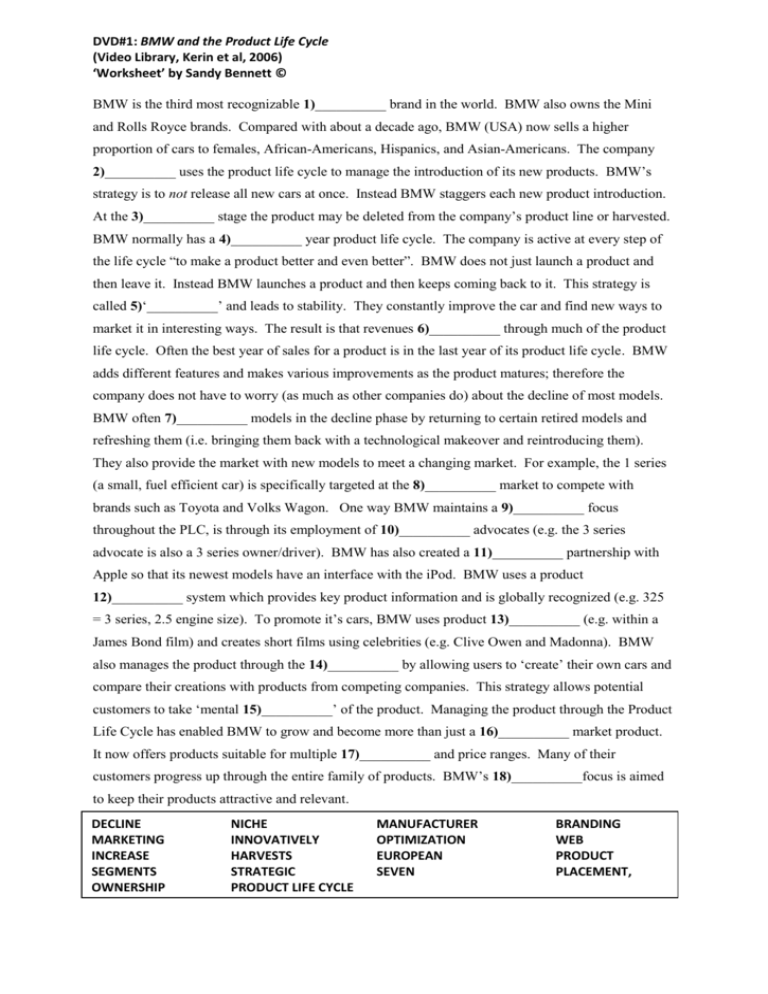
DVD#1: BMW and the Product Life Cycle (Video Library, Kerin et al, 2006) ‘Worksheet’ by Sandy Bennett © BMW is the third most recognizable 1)__________ brand in the world. BMW also owns the Mini and Rolls Royce brands. Compared with about a decade ago, BMW (USA) now sells a higher proportion of cars to females, African-Americans, Hispanics, and Asian-Americans. The company 2)__________ uses the product life cycle to manage the introduction of its new products. BMW’s strategy is to not release all new cars at once. Instead BMW staggers each new product introduction. At the 3)__________ stage the product may be deleted from the company’s product line or harvested. BMW normally has a 4)__________ year product life cycle. The company is active at every step of the life cycle “to make a product better and even better”. BMW does not just launch a product and then leave it. Instead BMW launches a product and then keeps coming back to it. This strategy is called 5)‘__________’ and leads to stability. They constantly improve the car and find new ways to market it in interesting ways. The result is that revenues 6)__________ through much of the product life cycle. Often the best year of sales for a product is in the last year of its product life cycle. BMW adds different features and makes various improvements as the product matures; therefore the company does not have to worry (as much as other companies do) about the decline of most models. BMW often 7)__________ models in the decline phase by returning to certain retired models and refreshing them (i.e. bringing them back with a technological makeover and reintroducing them). They also provide the market with new models to meet a changing market. For example, the 1 series (a small, fuel efficient car) is specifically targeted at the 8)__________ market to compete with brands such as Toyota and Volks Wagon. One way BMW maintains a 9)__________ focus throughout the PLC, is through its employment of 10)__________ advocates (e.g. the 3 series advocate is also a 3 series owner/driver). BMW has also created a 11)__________ partnership with Apple so that its newest models have an interface with the iPod. BMW uses a product 12)__________ system which provides key product information and is globally recognized (e.g. 325 = 3 series, 2.5 engine size). To promote it’s cars, BMW uses product 13)__________ (e.g. within a James Bond film) and creates short films using celebrities (e.g. Clive Owen and Madonna). BMW also manages the product through the 14)__________ by allowing users to ‘create’ their own cars and compare their creations with products from competing companies. This strategy allows potential customers to take ‘mental 15)__________’ of the product. Managing the product through the Product Life Cycle has enabled BMW to grow and become more than just a 16)__________ market product. It now offers products suitable for multiple 17)__________ and price ranges. Many of their customers progress up through the entire family of products. BMW’s 18)__________focus is aimed to keep their products attractive and relevant. DECLINE MARKETING INCREASE SEGMENTS OWNERSHIP NICHE INNOVATIVELY HARVESTS STRATEGIC PRODUCT LIFE CYCLE MANUFACTURER OPTIMIZATION EUROPEAN SEVEN BRANDING WEB PRODUCT PLACEMENT, Terminology Table (to accompany BMW and the Product Life Cycle) Match the following: Term 1) Brand Definition 2) Product brand a) The cycle through which a product is expected to go, namely, introduction, growth, maturity, and decline b) Two companies form a strategic partnership to work together 3) Manufacturer brand 4) Product Life Cycle c) Anything which can be offered to a market for attention, acquisition, use or consumption that might satisfy a need or want d) The subtle promotion of products through inserting them in film, television or other media 5) Harvest e) A brand created by the producer of a product or range of products 6) Co-brand f) A strategy used at the end of a product’s life cycle to extract the maximum profit from its sales until it is ultimately discontinued g) A narrowly defined group of potential customers 7) Product placement 8) Niche market 9) Product h) A collection of symbols such as a name, logo, slogan and design intended to create an image in the customer’s mind that differentiates a product from competitors’ products i) The name given to an product
